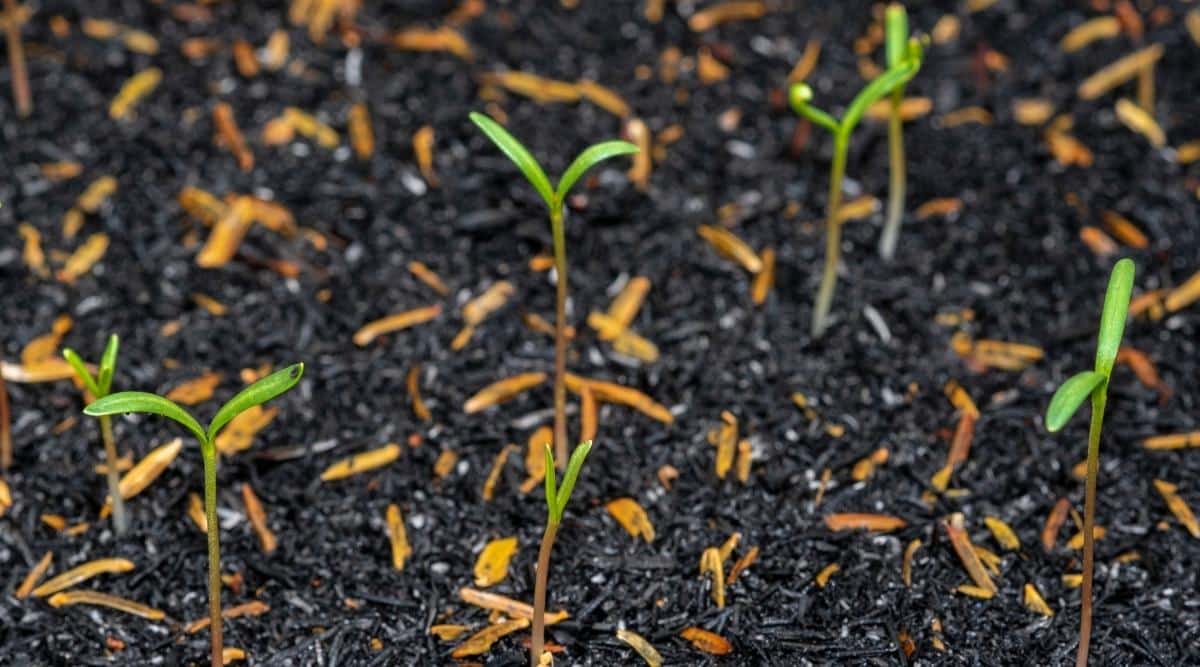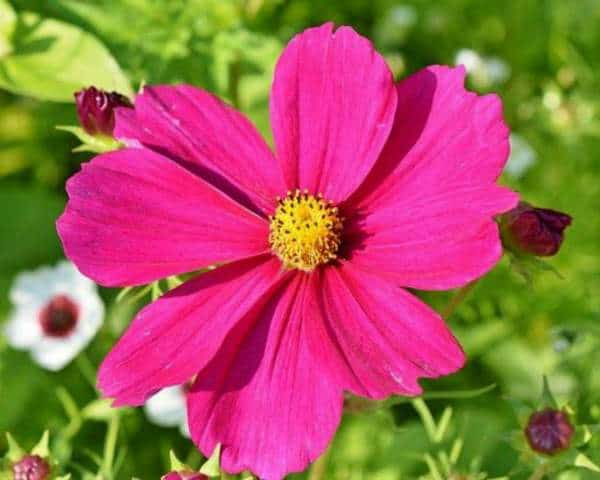Cosmos species, particularly C. bipinnatus and C. sulphureus, are charming, whimsical flowers also known as Mexican asters. Cosmos flowers belong to the Asteraceae family, which includes dandelions, black-eyed susans, and sunflowers.
Flowering cosmos plants are easy to grow from seed and can be prolific bloomers. They come into their own in the Fall here in the Midwest. A patch of cosmos is simply magical when in full bloom!.
The Mexican native plant cosmos is easy to grow, but there are a few things that can go wrong. This article will talk about the 15 most common problems with cosmos plants and how you can fix or avoid them in your own garden.
Cosmos are known for being easy to grow prolific bloomers that bring charming color to summer and fall gardens. So when your cosmos fail to produce many flowers it can be disappointing.
There are a few key reasons why your cosmos may not be flowering well In this article, we’ll explore the most common causes and solutions so you can get the most blooms from your cosmos plants
Planting Too Early
Cosmos is a short day plant, meaning it blooms in response to the shortening days and longer nights of late summer and fall. Planting seeds too early in spring means the cosmos will likely grow tall and lanky, focusing energy on foliage instead of flowers.
Most gardeners have best success planting cosmos in early to mid summer for a fall bloom. I like to sow seeds in June and July for flowers starting in August and lasting until frost. If planting starts, wait until night temperatures are reliably above 50 degrees F.
Insufficient Light
Cosmos thrives in full sun. Anything less than 6 hours of direct sun per day may result in weak flowering or leggy growth.
Make sure to select a spot that receives sunlight for most of the day, especially in the afternoon. Morning sun helps dry dew from leaves to deter disease, while afternoon sun fuels vigorous growth and lush blooms.
If your garden has mostly shade, choose cosmos varieties bred for partial shade or filtered light conditions. Or grow cosmos in a container that can be moved to capture more sun.
Overcrowding
Cosmos flowers best when the plants aren’t crowded. Overcrowded plants compete for light and nutrients, becoming stretched and scraggly.
Follow seed packet spacing recommendations, allowing at least 8-12 inches between plants depending on variety. Taller cosmos cultivars need more elbow room. Thin overcrowded seedlings.
Give cosmos room to spread out and receive ample air circulation. Proper spacing prevents powdery mildew and other diseases that can inhibit flowering.
Insufficient Nutrients
While cosmos isn’t terribly fussy, poor soil can result in stunted plants with few flowers. Test soil to determine pH and nutrient levels. Ideal pH for cosmos is between 6.0-7.0.
Before planting, amend soil with compost or well-rotted manure to enrich nutrition and drainage. Only fertilize lightly with a balanced organic fertilizer, as excess nitrogen triggers leafy growth over blooms.
As cosmos establishes, side dress plants once mid-summer with a thin layer of compost or fish emulsion. Avoid high nitrogen chemical fertilizers.
Underwatering
Cosmos appreciates consistent moisture, especially when establishing and during bud formation. Drought stressed plants will wilt and stop flowering.
Water cosmos at the base to keep soil evenly moist but not soggy wet. Provide 1-2 inches of water per week from rain or irrigation. Mulch to conserve soil moisture and reduce watering needs.
Automatic drip irrigation delivers water right to the roots without wasting any. Hand water in morning so leaves dry out during the day, preventing disease.
Overwatering
While cosmos needs regular water, overly soggy soil is detrimental. Excess moisture suffocates roots, encouraging fungal diseases that inhibit flowering.
Good drainage is key. Before planting, loosen and amend heavy clay soil with compost to improve drainage. Avoid planting in low, compacted areas that collect water.
Let the top few inches of soil dry out between watering. Check moisture by digging down with a finger; water only when soil is partly dry. Allow excess water to drain away quickly.
Extreme Weather
Temperature extremes can disrupt cosmos flowering. Prolonged cool weather below 50 degrees F may delay blooms. Heat waves above 85 degrees F can cause flowers to abort or brown edges on petals.
For spring crops, use row covers to boost soil warmth. Plant in microclimates protected from extreme winds. Provide afternoon shade ifneeded during hot spells.
Choose more heat and cold tolerant cosmos varieties. The Sonata and Sensation series tend to be resilient. Seek out types bred for your specific zone.
Insect Damage
Certain insects feed on leaves, buds, or petals, distorting flowers or preventing them from forming properly. Common pests include aphids, thrips, Japanese beetles, and tarnished plant bugs.
Check for signs of infestation like curled leaves, spotting, or small insects on plant parts. Remove pests by hand or use insecticidal soap sprays. Attract beneficial insects by planting flowers they favor nearby.
Row covers can exclude early season insect pests. Once bloom starts, apply lightweight covers only temporarily when pests are active.
Diseases
Fungal diseases like powdery mildew, downy mildew, botrytis, rust, and wilt can weaken plants and hinder flowering if left uncontrolled.
Avoid wetting foliage when watering and give plants ample air circulation. Don’t work around plants while wet. Apply appropriate organic fungicides at first disease sign.
Remove and destroy severely infected plants. Rake up and dispose of fallen leaves and debris that may harbor disease. Rotate cosmos location in the garden each year.
Improper Care
Poor care practices can stress cosmos, directing energy away from maximum flowering. Avoid shearing cosmos like a hedge; instead prune strategically to encourage branching.
Deadhead spent blooms to promote continuous flowering. Stake tall varieties to prevent flopping. Check ties and stakes regularly so they don’t cut into stems.
Avoid overfertilizing, especially with high nitrogen. Excess nitrogen leads to leafy growth rather than flowers. Follow package rates and use organic sources.
Correct improper care issues to get your cosmos back on track. Consult your local extension office for best practices in your area.
Genetics
Some cosmos varieties and cultivars flower more prolifically than others by nature. Hybrids bred for cut flowers often bloom best. The Double Click and Cosmic series offer improved performance.
If your cosmos came from old, saved seeds, germination rates and vigor may have declined over generations. Purchase fresh seed every 2-3 years from reputable sources for robust, floriferous plants.
Trial different cosmos types to find ones suited to your growing conditions that flower generously. Ask fellow gardeners in your area for their top picks.
Don’t give up on cosmos that disappoint. Review this list to troubleshoot what factors may be inhibiting the best floral display. A few simple tweaks can have your cosmos blooming abundantly again soon!
Lots of Ants on Stems

Ants don’t hurt cosmos flowers by themselves, but they are often a sign of a bigger problem. Aphids.
Aphids are tiny bugs that are 1/16 to ⅛ of an inch long and can be any color, from brown to gray to green. They have piercing-sucking mouthparts that not only do damage to the plant but also transmit viruses. Aphids can reproduce very quickly. It’s said that if you see one aphid then there are probably many more you don’t see.
Ants and aphids have a symbiotic relationship. Aphids feed on plants and secrete a sugary waste called honeydew. The ants feed on honeydew. As payment, the ants will lead the aphids to the most tasty parts of the plant and keep them safe. They will even bring aphids to their nest during the winter!.
If your cosmos are mature enough, it’s likely that aphids won’t cause too much damage. However, aphid feeding can cause twisted and curled leaves, yellow foliage, stunting, and overall poor plant growth. Viruses may be transmitted as a result of aphid feeding.
A good way to get rid of aphids is to encourage insects that eat them, like lady beetles, lacewings, and parasitic wasps. Another option is to spray plants that are heavily infested with a strong stream of water. If I notice one plant is particularly infested, I’ll often remove the plant from the garden entirely.
Seedlings Fail to Germinate

One of the earliest cosmos problems you may have (and many other flowers) is either a failure to germinate or a seedling disease called damping off. Cosmos seeds are long and skinny. While they do easily sprout on the surface of the soil, I find that I have the best germination rates if I bury the seeds shallowly–at about ⅛ to ¼ inch deep.
When you direct sow, you can spread the seeds out and then lightly rake the ground to make sure the seeds get good contact with the soil. Good seed-to-soil contact ensures the seeds have a more even temperature and moisture. To start seeds indoors, gently press them into the germination mix and then sprinkle a little vermiculite over them.
Damping off is a disease caused by a few different types of fungi. It will look like your seedlings are healthy when they first come up, but then they will start dying off for no reason.
Many times, damping off will cause a large part of a tray or garden area to die. Sometimes seedlings may fail to emerge from the soil. The cotyledons (the first “leaves”) will become mushy and water-soaked in appearance. The stems will become water-soaked and thread-like. If you pluck the seedling out of the soil, roots can be nearly absent.
The pathogens responsible for damping off thrive in cool, wet conditions. They also survive well in soil and debris. When you start your cosmos indoors, make sure your pots and trays are very clean and germ-free.
Use only soil media (like germination mixes or potting mixes) instead of outside soil. Do not reuse old potting mix. Use a heat mat under seedling trays to keep the temperatures evenly warm. To water, use clean, warm water with a temperature between 68 to 77 °F.
If you are sowing your cosmos outside, you can prevent damping off by making sure you are not planting during cool and excessively wet conditions. Damping off occurs mostly in soil temperatures below 68°F. Try planting later in the spring or early summer to avoid favorable damping-off conditions.
[Know The Reasons] Why Cosmos Is Not Flowering?
Why are my Cosmos plants not flowering?
If your cosmos plants aren’t flowering, there are a few conditions that you can investigate to figure out why. Common reasons that cosmos aren’t flowering include too much nitrogen or too much water in the soil, too little sunlight reaching the plants, or the plants not yet reaching maturity.
Why does my cosmos flower so late?
Bad weather, seeds that have been stored for more then a year, too much fertilizer and slow draining soil can all affect cosmos blooms. Cosmos is unusual in that they require more hours of uninterrupted darkness then day light to flower (short day plants) so it may flower later in the season.
Do cosmos flowers bloom?
Cosmos flowers belong to the Asteraceae family, which includes dandelions, black-eyed susans, and sunflowers. Flowering cosmos plants are easy to grow from seed and can be prolific bloomers. They come into their own in the Fall here in the Midwest. A patch of cosmos is simply magical when in full bloom!
Why does my Cosmos plant have no buds?
A third possible reason for lack of buds is improper watering. Cosmos plants prefer well-draining soil and do not tolerate wet feet. Overwatering can lead to root rot and stunted growth, so make sure to water your plant only when the top inch of soil feels dry to the touch.
- The Ultimate Guide to Growing Strawberries in Raised Beds - August 8, 2025
- No-Dig Garden Beds: The Easiest Way to Grow a Beautiful Garden - August 6, 2025
- How to Protect and Preserve Wood for Raised Garden Beds - August 6, 2025

